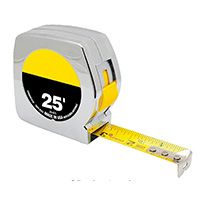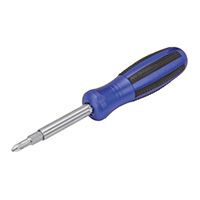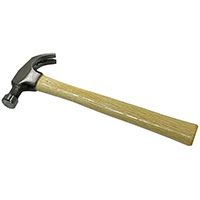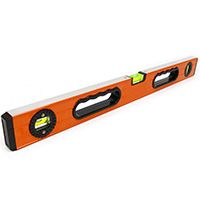Hanging a curtain rod seems easy, but it can quickly become frustrating when you hang the curtains only to find out the rod is too high, too low, or not level. In this guide and accompanying video, design expert Jenn Largesse provides comprehensive instructions and tips to help you choose and install curtain rods that will upgrade any room in the house.
Steps for Hanging a Curtain Rod
Follow these steps to learn how to hang a curtain rod properly. Scroll further down the page to find our tool and material recommendations.
Step 1: Selecting the right rod
Choose a curtain rod that complements your curtains and room decor. Consider these factors:
- Length: Ensure the rod is long enough to extend beyond the window as planned.
- Material: Options include metal, wood, or plastic, each offering different aesthetics and durability.
- Finials: These decorative end pieces can add a finishing touch to your window treatment.
Step 2: Measure the window
To add drapes that partially cover the window when open, plan to add 2 to 5 inches to each side of the frame.
To let in the maximum amount of natural light when the drapes are open, add 8 to 15 inches to each side of the frame.
Once you’ve chosen the degree of window coverage, do the following:
- Fine-tune your measurements using a stud finder to locate the stud beside the window. If a stud is close to the desired location, shift the placement so that you can insert the mounting screws into a stud.
- If your placement doesn’t land on a wall stud, install wall anchors before mounting the hanging brackets. For delicate rods or those longer than 4 feet, you may also need to add a center bracket to prevent the rod from sagging.
- Next, measure the height from the floor to the top edge of the window’s frame. A curtain rod usually sits about 4 inches above the window, but many people raise the rod even higher to make the room feel taller.
Keep in mind that floor-length curtain panels come in somewhat standard heights of 84 inches, 95 inches, 108 inches, and 120 inches. If you decide to move the rod higher up, you may need to purchase a longer panel and hem it to length or spend more money on custom curtains.
Step 3: Decide what kind of curtain you’ll be installing
- Drapery and curtains come in various hanging styles. The most common hanging elements are metal grommets, fabric top tabs, clip-on rings, and pocket sleeves.
- The hanging type can adjust the overall height of the curtain, so be sure to have your curtains on hand to help determine the final height of the rod.
Step 4: Measure and mark the location of the hangers on the wall
In an open space, it can be difficult to replicate these measurements on both sides of the window and have them turn out perfectly level. Creating a quick cardboard template can be helpful. To do this:
- Cut the corner out of a square piece of cardboard that can fit over the top corner of the window frame.
- Measure and mark the desired location of the hardware.
- Create two holes using the hanger as a guide.
- Now, place the template on the wall, slide it against the window frame, and mark the position of the holes.
Step 5: Hang the rod and curtains
Finally, you’re ready to begin installation:
- Drive the screws into the wall, and position the hanger.
- Flip to the opposite side to make the remaining marks and install the screws.
- Thread your curtains onto the rod according to their hanging style.
- Place the rod onto the installed brackets.
- Adjust the curtains to ensure even distribution.
- Add finials to the ends of the rod if desired.
- Tighten any set screws on the brackets to hold the rod securely in place.
Additional Hardware Needed to Hang a Curtain Rod
Depending on the location and specifications of your installation, you may also need:
- Center support bracket: For rods longer than four feet or those made of thinner material, a center support can prevent sagging.
- Screws: Ensure you have the correct size and type for your wall material.
- Wall anchors: Use these if you can’t secure the brackets into wall studs.
Finishing Touches for Hanging a Curtain Rod
With your curtain rod installed, there are a few final considerations to keep in mind to ensure your window treatment looks its best, such as:
- Curtain Fullness: As a general rule, if you want functional curtains that can fully close, use enough panels to cover at least twice the width of your window. For decorative purposes, you may opt for less fullness.
- Hemming: If your curtains are too long for your chosen rod height, you may need to hem them. You can do so by hand, with a sewing machine, or with hemming tape for a no-sew option. Ensure the hem is even all the way across for a polished look.
- Seasonal Updates: Changing your curtains according to the season can refresh the ambiance of your room. Lightweight fabrics in light colors work well for spring and summer, while heavier materials in darker shades are suitable for fall and winter.
- Sheer Curtains: Sheer curtains allow light to filter through while maintaining privacy.
- Smart Rods: For a touch of modern convenience, consider installing smart curtain rods. These rods are controllable via a smartphone app, remote control, or voice commands.
- Steaming or Ironing: Your curtains may have creases or wrinkles from the packaging. Use a steamer or iron on the appropriate setting for your curtain fabric to remove these and create a smooth, finished appearance.
- Tiebacks: Tiebacks keep curtains open and add an elegant detail to your window treatment. Choose tiebacks that match your existing decor for a streamlined look.
- Valances: Valances can hide curtain rods and hardware or add another layer of design.
Materials
- Curtain rod
- Curtain rod hooks
- Curtain panels
- Finials
- Piece of cardboard
- Wall anchors (optional)







